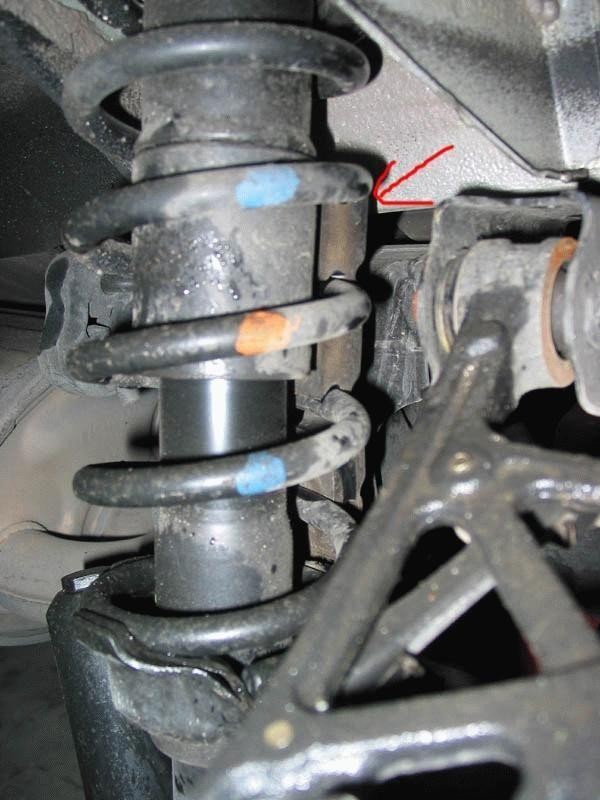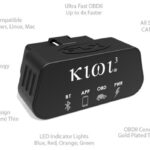The Honda S2000, a legendary roadster celebrated for its high-revving engine and exhilarating driving experience, is not immune to common automotive issues. When your S2000 encounters a hiccup, whether it’s a mysterious check engine light or a frustrating hesitation, the first step towards resolution often lies in understanding your car’s diagnostic system. This is where the OBD2 port becomes your best friend. This guide will walk you through common problems experienced by Honda S2000 owners, and how utilizing your OBD2 port can be the key to diagnosing and addressing these issues effectively.
Decoding Common S2000 Issues with Your OBD2 Port
Just like any vehicle, the Honda S2000 can experience a range of problems, from minor annoyances to more significant mechanical faults. Many of these issues can trigger your car’s Check Engine Light (CEL), illuminating a warning signal on your dashboard. This light is your car’s way of saying, “Hey, something isn’t quite right, and I’ve stored a code about it!” The OBD2 (On-Board Diagnostics II) port is the gateway to accessing these stored codes and other valuable diagnostic information.
Locating Your Honda S2000 Obd2 Port:
Before diving into troubleshooting, it’s essential to know where to find your S2000’s OBD2 port. You’ll find it conveniently located in the passenger side footwell. Look for a rectangular, 16-pin connector typically situated under the trim, making it easily accessible for diagnostic tools.
Utilizing an OBD2 Scanner:
To read the diagnostic trouble codes (DTCs) stored by your S2000’s ECU (Engine Control Unit), you’ll need an OBD2 scanner. These scanners range from basic handheld devices to more advanced professional-grade tools. Simply plug the scanner into the OBD2 port, turn your ignition to the “ON” position (without starting the engine), and follow the scanner’s instructions to retrieve the codes.
Common S2000 Problems and How the OBD2 Port Helps:
Let’s explore some frequent issues reported by S2000 owners and how using your OBD2 port and scanner can aid in diagnosis:
Idle Issues, Hesitation, Kangerooing, and Misfires
These symptoms are often intertwined and can stem from various sources. The OBD2 port is crucial here, as any misfire or significant engine issue will likely trigger a CEL and store corresponding fault codes.
Possible Causes and OBD2 Diagnostics:
- Loose Throttle Cable: While not directly detectable by OBD2, a physical inspection is needed. However, related issues might cause imbalances detectable by sensors, potentially leading to codes.
- Failed or Failing MAP Sensor (Manifold Absolute Pressure Sensor): A faulty MAP sensor is a common culprit in S2000 hesitation and misfires, especially at higher RPMs. While not always throwing a specific MAP sensor code, it can lead to codes related to fuel trims or misfires, giving you a starting point.
- Failed or Failing O2/Lambda Sensor (Oxygen Sensor): O2 sensor malfunctions can cause incorrect fuel mixtures, leading to idle problems, hesitation, and potentially misfires. OBD2 scanners will readily identify O2 sensor codes, pinpointing the faulty sensor (Bank 1 Sensor 1, Bank 1 Sensor 2, etc.).
- Air Leaks (Vacuum Side): Vacuum leaks disrupt the air-fuel mixture and can cause erratic idling and hesitation. While OBD2 won’t directly detect a leak, it might trigger codes related to lean running conditions or fuel trim imbalances.
- Blocked Throttle Lines or Dirty Throttle Butterfly: These mechanical issues are not OBD2 detectable directly, but related sensor readings might be affected, potentially leading to codes indicating fuel or air intake problems.
- Blocked Air Filter: Restricted airflow can impact engine performance. While not directly OBD2 related, it’s a basic check to perform alongside OBD2 diagnostics.
- ISCV/AIC (Idle Speed Control Valve) Misbehaving: A malfunctioning ISCV can cause unstable idle. OBD2 systems may detect issues with idle control and potentially log codes related to the IAC (Idle Air Control) system.
- Misfires (Damaged Coil Packs, Worn Spark Plugs, Valve Clearances, Blocked Injectors, Crank Position Sensor, Corroded ECU Wires): Misfires are readily detected by the OBD2 system. You’ll likely see codes like P0301 (Cylinder 1 misfire), P0302 (Cylinder 2 misfire), etc. These codes pinpoint which cylinder is misfiring, guiding your troubleshooting. Swapping coil packs and checking spark plugs are common next steps after retrieving misfire codes from the OBD2 port.
Troubleshooting Hesitation/Kangerooing:
The frustrating “kangerooing” or hesitation, especially when pulling away, is often linked to heat soak affecting the IAT (Intake Air Temperature) or MAP sensors. While OBD2 may not directly pinpoint heat soak, monitoring live data from these sensors using an OBD2 scanner can reveal unusual readings when the issue occurs. Look for excessively high IAT readings or erratic MAP sensor values.
Addressing Misfires:
Misfire codes obtained through your OBD2 port are invaluable. If you get codes like P0301 and P0303 (misfires on cylinders 1 and 3), you can use this information to strategically swap components like coil packs between cylinders. If the misfire code follows the coil pack to a different cylinder after swapping, you’ve likely identified a faulty coil pack.
Check Engine Light (CEL) and ECU Codes
The CEL is your primary indicator that something is amiss. Your OBD2 port is the gateway to understanding why the CEL is illuminated.
Reading and Interpreting Codes:
- Connect your OBD2 scanner.
- Retrieve the DTCs.
- Consult a reliable code list. The original article provides a link to an S2000 ECU error code list, which is a valuable resource. Many online resources and OBD2 scanner apps also provide code definitions.
- Understand the code’s meaning. Is it related to the engine, emissions system, or another component?
ECU Reset:
Resetting the ECU can sometimes resolve temporary glitches or after repairs. However, always read and record the fault codes using your OBD2 scanner before resetting the ECU. Resetting clears the codes, potentially losing valuable diagnostic information if the problem persists.
How to Reset the ECU (and Why OBD2 is Still Important):
- Locate the ECU fuse in the passenger footwell fuse box (refer to the original article’s image).
- Remove the fuse for about 10 minutes. This cuts power to the ECU.
- Reinstall the fuse.
- Start the car and allow it to idle. The ECU will need to relearn idle parameters. The “cooling fan cycle” method mentioned in the original article can expedite this process.
Even after an ECU reset, if the underlying problem isn’t fixed, the CEL will likely reappear, and new codes will be stored. Therefore, OBD2 scanning remains crucial even after a reset.
Other Common Issues and OBD2 Relevance
The original article lists numerous other common S2000 problems. While not all are directly diagnosed via OBD2, understanding the system’s limitations and strengths is key.
- Throttle Cable Slack: Mechanical adjustment, not OBD2.
- Blocked Air Filter: Visual inspection, not OBD2.
- Air Leaks: Smoke testing or visual/audible inspection, OBD2 may show lean codes.
- Spark Plugs: Physical inspection, OBD2 for misfire codes related to plug issues.
- Throttle Butterfly/Vac Line Cleaning: Mechanical cleaning, not OBD2 directly.
- Excessive Fuel Consumption (Lambda/O2 Sensor): OBD2 will likely show O2 sensor codes, confirming sensor failure.
- Valve Clearances: Mechanical adjustment, OBD2 for misfire codes if clearances are severely out of spec.
- Injectors: OBD2 for misfire codes related to injector problems, but physical testing/cleaning is needed for confirmation.
- Idle Control Valve Cleaning: Mechanical cleaning, OBD2 may show IAC related codes for severe issues.
- ECU Wire Corrosion: Visual inspection and electrical testing, OBD2 may show erratic or multiple seemingly unrelated codes.
 Honda S2000 Fuse Box Location
Honda S2000 Fuse Box Location
Engine Management Sensors and OBD2
The article explains key engine management sensors: MAP, O2, TPS (Throttle Position Sensor), and IAT (Intake Air Temperature). All these sensors are monitored by the ECU, and malfunctions will often trigger CELs and store codes accessible via the OBD2 port.
- MAP Sensor: Crucial for fuel delivery calculations. OBD2 can detect out-of-range readings or sensor failures, though intermittent issues might be harder to pinpoint with codes alone.
- O2 Sensor: Monitors exhaust oxygen content for fuel mixture feedback. OBD2 is excellent at detecting O2 sensor problems, providing specific codes for heater circuit faults, slow response, or out-of-range readings.
- TPS Sensor: Indicates throttle position. OBD2 can detect TPS malfunctions, leading to codes related to throttle position sensor range or correlation issues.
- IAT Sensor: Measures intake air temperature for fuel mixture adjustments. OBD2 can identify IAT sensor failures or out-of-range readings.
Beyond Engine Issues: OBD2 Limitations
It’s important to remember that OBD2 primarily focuses on emissions-related and powertrain issues. Problems like suspension noises, roof wear, heavy clutch, or rattling roof catches, as mentioned in the original article, are not typically diagnosed through the OBD2 system. These require mechanical inspection and troubleshooting.
Conclusion: Your OBD2 Port – The First Step in S2000 Problem Solving
The OBD2 port on your Honda S2000 is an invaluable tool for diagnosing a wide range of engine-related problems. By utilizing an OBD2 scanner, you can access fault codes, gain insights into sensor readings, and significantly streamline the troubleshooting process. While not every issue is OBD2 detectable, understanding how to use your OBD2 port and interpret the data it provides is the first crucial step in keeping your S2000 running smoothly and enjoying the open road. Before undertaking any repairs, always consult your S2000’s service manual and consider seeking professional help from a qualified mechanic when needed. Remember to always prioritize safety and accuracy when working on your vehicle.
